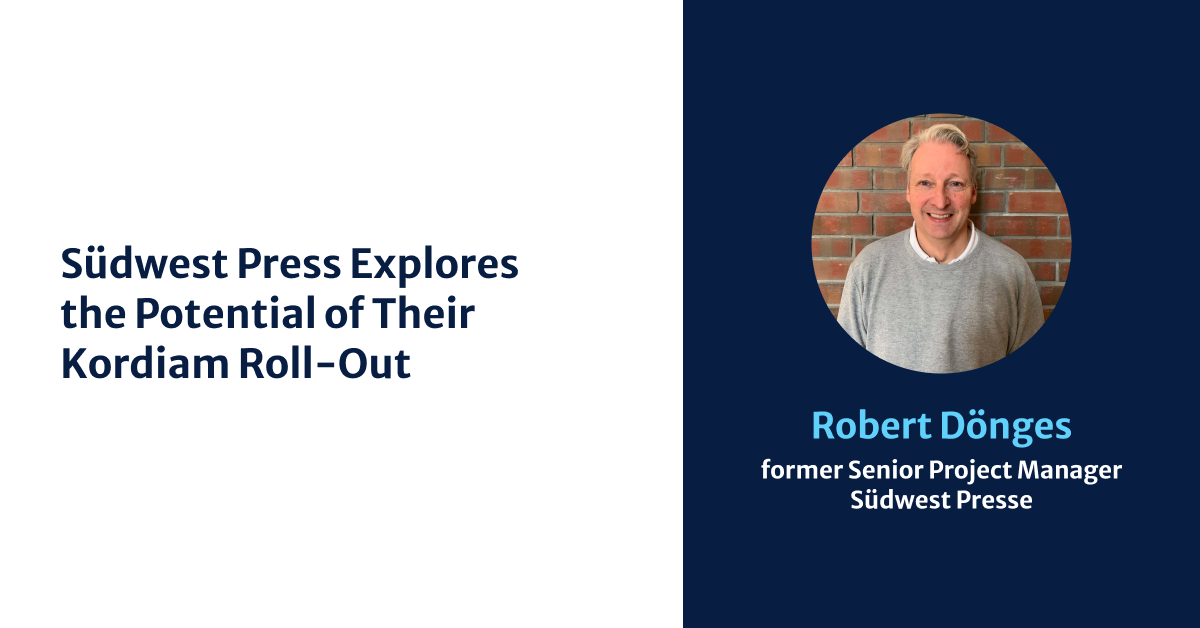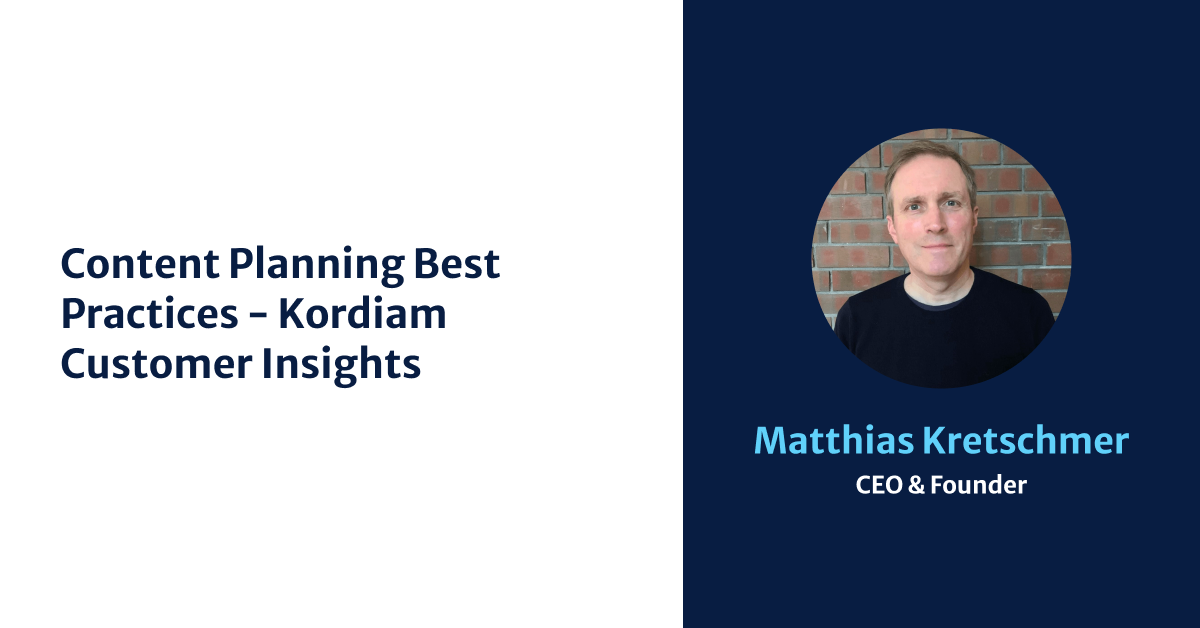How Kordiam Helps Berner Zeitung Manage Editorial Planning
The fact that newsrooms and planning are not, as many claim, natural enemies was a point made by a number of the presenters at Editorial Days 2016, but nobody made that point as forcefully as Dominic Ramel of Berner Zeitung (BZ). That's because his job title - a rare one in publishing - is Planning Chief and his entire focus is on using planning to maximize resources and streamline processes with a content planning tool.
Dominic Ramel works at BZ, part of Swiss publisher Tamedia which produces magazines, papers, and a growing portfolio of online platforms.
It publishes in German and French with ten online platforms, six magazines, seven dailies and Sunday titles in German, plus eight online news outlets, three magazines and six dailies in French.
BZ itself has two local editions, 12 sections, and 180 staff, so it doesn't take much imagination to see the demand for complex content planning.
“Convergence has made a journalist's life more complex,” he explains. “We have to serve online, including social media, as well as print, and all these channels work at different speeds.
Online basically works around the clock, but with complex stories requiring video and interactive graphics you need a longer preparation time and more teamwork. In our case, our workflows have traditionally focused on print, so while we're gradually moving away from that it is still a fact of life.”
Multiple platforms working at different speeds is a problem for all publishers, but BZ believes the way to deal with it is increased planning. “My job is to promote inter-departmental working and support those department managers and bring a longer-term outlook into planning – away from the previous short and medium-term thinking.”
The Day in Deadlines: Content Planning Tool and Publishing at BZ
The touchstone of planning for most publishing is the editorial conference and Ramel started there with the new approach. “For a start, we modified the timings of meetings and basically moved everything up the schedule. So the first conference call asks 'what has changed for online since yesterday, and what are the most important elements for print?'
Layout and proofreading were moved to a time slot two hours earlier in the day. “We also introduced a new meeting at 4 pm where we look at the paper for the day after tomorrow and plan what will go online. That's when we ask 'what needs to be online first? What should be held back?”
Deadline times changed too. “First, we have timings set not story by story, and not by hour but instead in two waves. Editors write stories to be live between 12 noon and five, then there is a second wave of evening publishing between five and eleven at night.”
Leveraging Kordiam for Editorial Content Planning
Ramel uses Kordiam as the content planning tool that keeps track of this publishing flow and uses it in meetings for on-the-fly editing.
“We edit Kordiam live; the editor has a laptop with the screen projected for everyone to see and do live edits in meetings. At 11 am we have the editorial deadline for print and articles we haven't published online are brought in.”
Kordiam's editorial content planning software also helps to create a consistent way of working.
“We use the adjustable status symbols to make a list and the first task was to systematize the entries as different offices were using them differently. I tried to harmonize that and have consistent entries because consistency has to come from the top. What you see here is an example; green is for print, red is online, and a blue question mark is for a story that doesn't yet have a status – such as stories that have been proposed but not yet discussed."
Using dedicated editorial calendar software makes a huge difference. "Given that we used to use Excel spreadsheets that's a huge improvement; it's clearer, gives a good overview, and it's truly multi-user - back when multiple editors worked on the same spreadsheet it would often block."
Embracing the Role of Planning Chief
When other Editorial Days attendees asked Ramel if his new role as Head of Planning had gone down well with the staff he allowed himself a smile.
“My impression was that the news structure took it pretty well. It took some getting used to both for members of editorial and managers and we needed to breathe life into the new position. Increasingly what I see is that colleagues are happy with it as it means they have someone on-site who knows what is happening and acts as an interface to planning. A lot of my job is opening doors and making people talk to one another.”
Dominic Ramel's experience at Berner Zeitung demonstrates how leveraging tools like Kordiam's workflow software can effectively manage the complexity of modern newsrooms. By focusing on comprehensive content planning and coordination across multiple platforms, BZ is able to streamline processes and ensure quality content delivery.

